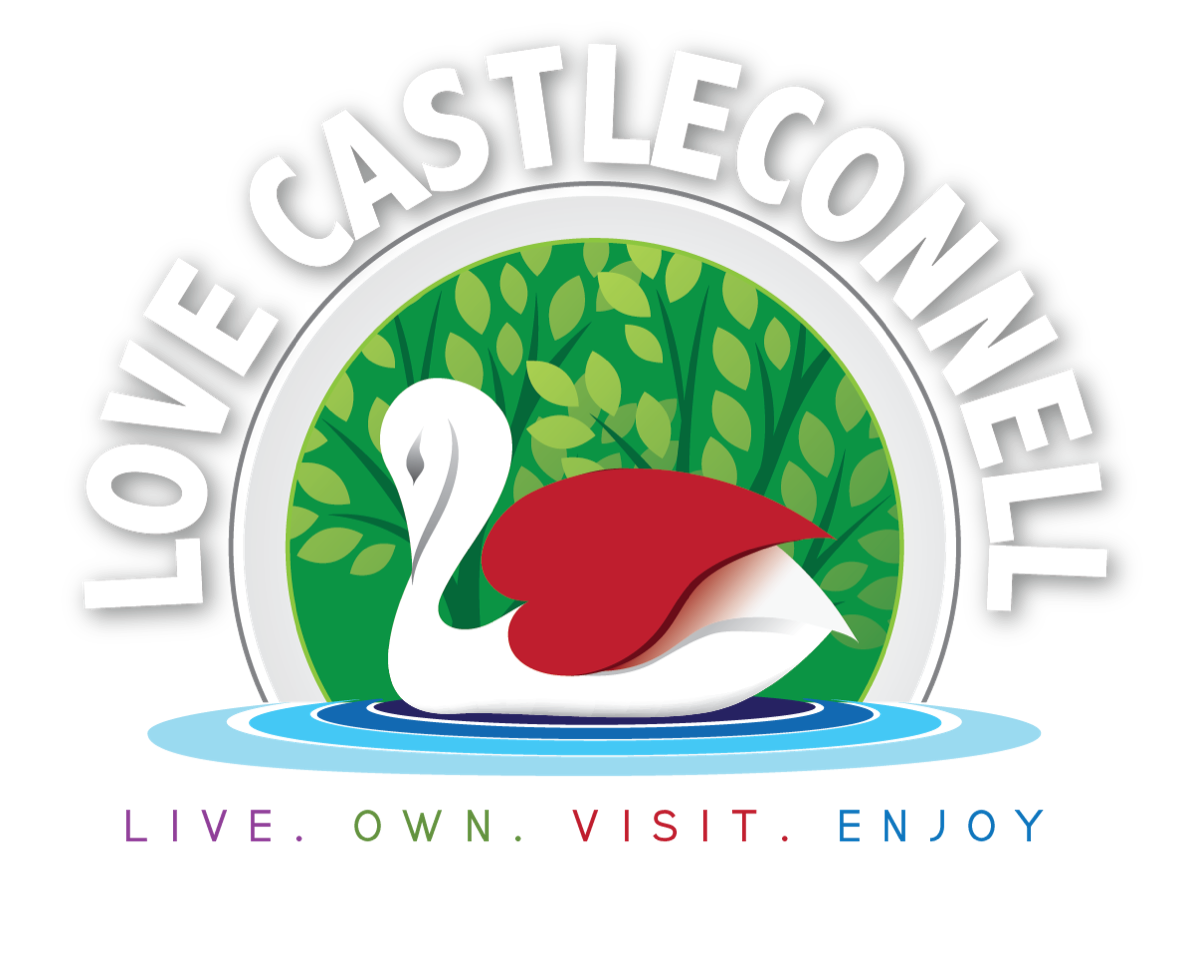“Castleconnell was and still is one of the most beautiful scenic areas in Ireland, if not in the World”. These are the words of one of our oldest parishioners, who wishes to remain anonymous, but has such clear and wonderful memories of growing up in Castleconnell.
She was just a young girl when one warm sunny day in 1941, she recalls the sounds and sights of the soldiers of the 12th Desmond Infantry Battalion marching into the village from Templemore. “It was like a swarm of bees, all you could see was a sea of green as the soldiers marched in unison”. She remembered thinking how hungry they must be after that long journey and of course that time, there were very few places to eat in the village. There was a garage about halfway up Old Street, which was owned by Mrs. Adams and together with her daughters Emmie and Maud, they transformed it into a lovely area where they cooked and served meals to the soldiers. The Mackey family sold milk and Mrs Keane of the Worrall’s Inn also provided food and drink for them.
Many of the beautiful old houses in Castleconnell and surrounding areas had been closed up for many years and the Military took over these houses for the duration of their stay here. ‘Shanacloon’ and ‘Coolbawn’ were both occupied and a path was made between the two houses. ‘The Rock’ was used as a hospital and four houses in ‘The Tontines’ were also filled to capacity with soldiers. ‘The Shannon Inn’ became known as ‘The Officer’s Mess’ and although Belmont House was also occupied by military personnel, Shaw’s (The Castle Oaks House Hotel) was not available as the family still lived there. The occupation of Doonass House proved to be a huge asset for the locality because the military built the footbridge which is still there and used continuously by people on both sides of the Shannon.
In the 1940s in Castleconnell as well as all around the country, business was very slow and the arrival of the military brought some semblance of prosperity to the village. Their wages were low, but they bought cigarettes and had their few pints and sometimes meals from the local businesses. They also got to know a lot of the locals and some met their life partner. When the war was over, several of the soldiers stayed in Castleconnell, married local girls and reared their families here.
Petrol was very scarce and so there were very few cars or other vehicles on the road. Rationing made life even more difficult for those who were struggling to survive during these years. Tea, flour and sugar were all rationed. Each household was given a coupon for a half ounce of tea per person, this was a huge sacrifice for people as tea was the drink of the nation. She remembers the black bread and the jam which was made from berries and sugar provided for the task, but it all had to be accounted for. Although she recalls, there was not very much money around, the women made their own skirts, turned collars on shirts and ripped up coats to turn them and maybe sew on a little piece of velvet on the collars and cuffs and a new coat was born! Many were cut down to fit the children coming along too! “Leave it a bit big!” was the saying as it would then last for a few years before it was handed down to the next child.
After the war and the military had left, refugees from Hungary among other places came to the village and were housed in some of the houses in ‘The Tontines’. The women were great knitters and they provided jumpers, cardigans and lots of other knitwear for the children of the parish.
Another event which proved to be very important for the village was the arrival of the Presentation Sisters to take over Shaw’s House in Stradbally. The nuns provided some employment but also they established Rosary Hill Secondary School and some years later the Vocational School was also opened. These two schools now meant that the local children could have a secondary education without the added expense of travelling to Limerick every day.
Castleconnell was renowned for its beauty and also its fishing, which brought much needed revenue to the area. The fishermen who arrived from England and also other parts of Europe, stayed in the local hotels, ate and drank locally and paid the ghillies who landed the fish for them in case they “would dirty their plus fours”. The boat builders of Castleconnell were the O’Connor family (always known as the Connors) and they had a workshop located in the village. Every February, the boats (which would have been ordered beforehand) were taken out and used by the fishermen. Then as time went on and the fishing declined, they adapted into carpentry and became well-known for their roofing skills, among others.
Looking back over these years, it is easy to see why the older people of the parish like to reminisce about their childhood and early adult years in what was not just a scenic and beautiful village but also one where kindness and compassion for others was evident. We look forward to hearing many more stories of life in Castleconnell over the first part of the 20th century from this contributor next year!
